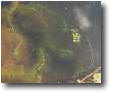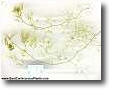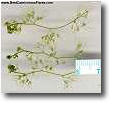|
Aldrovanda and aquatic Utricularia for sale! |
|
|
Aldrovanda and aquatic Utricularia for sale! |
|
ALDROVANDA VESICULOSA AND AQUATIC UTRICULARIA SPECIES FOR SALE
Institute of Botany in Trebon, Czech Republic, offers for sale:
A) Aldrovanda vesiculosa turions for CP growers, scientific or Nature Conservation organizations, for cultivation or (re)introduction activities. The plants from East Poland are cultivated outdoors. They will be sent by post mail, as turions enclosed in a tiny PE tube, from November to May.
Price: 5 USD (or 5 EUR/turion) minimum order: 10 turions; any order over 50 turions: price 3 USD/turion (or 3 EUR).
For the cultivation instructions see the paper by L. Adamec (1997): "How to grow Aldrovanda vesiculosa outdoors" in the special issue of CPN 26: 85-88. The instructions may be found on-line (http://www.bestcarnivorousplants.com/aldrovanda/index.htm) or sent on request.
Aldrovanda vesiculosa Photo Gallery!
B) Aldrovanda vesiculosa turions of red temperate Hungarian plants for outdoor growing. This is the only red temperate Aldrovanda population and has recently been taken into culture. The turions will be sent by post mail in a tiny PE tube from November to May.
Price: 10 USD (or 10 EUR/turion) minimum order: 3 turions. Limited amount of the turions is available. The cultivation instructions are the same as for the Polish plants.
C) African subtropical Aldrovanda vesiculosa plants from Okavango Swamp, Botswana, for indoor or outdoor cultivation. As dependent on light conditions these plants can be red. They do not form turions but they tolerate any temperature over 5 oC. Shoot apices can be sent over the whole year at above zero temperatures. Limited amount of the plants is available.
Price: 10 USD (or 10 EUR) /plant; minimum order: 4 plants.
D) Australian (sub)tropical Aldrovanda vesiculosa plants for indoor cultivation. As dependent on light conditions these plants can be red. Plants from an indoor culture of five Australian populations are available (they are the same in culture):
a) Subtropical: East-coast Australia, S. of Sydney, NSW;
b) Tropical: S. of Darwin, N Australia, NT.
c) Tropical: Kimberley, NW Australia, WA.
d) Tropical: Leach Lagoon near Katherine, N. Australia, NT.
e) Subtropical: Esperance Bay, SW Australia, WA.
The Australian plants grow over the whole year at temperatures above 18 °C and do not form turions. At lower temperatures, they form weakly dormant turions. In temperate regions, they may also be grown outdoors over summer season. Apical segments ca. 4 cm long are sent by post mail in plastic vials or tubes, from March to November, when outdoor temperature is above 5 °C. For the cultivation conditions see the paper by L. Adamec (1999): "The biology and cultivation of red Australian Aldrovanda vesiculosa" in CPN 28(4): 128-132 (also on-line).
Price: 8 USD (or 8 EUR) /plant; minimum order (regardless of the populations): 4 plants.
Aldrovanda vesiculosa Photo Gallery!
E) Turions of European temperate aquatic Utricularia species for outdoor cultivation: U. australis, U. vulgaris, U. minor, U. bremii, U. intermedia, U. stygia, U. ochroleuca. Turions are sent by post mail in tiny PE tubes, from November to June.
Price: 2 USD (or 2 EUR) /turion; minimum order (regardless of the species): 10 turions.
F) Plants or dormant turions of Utricularia dimorphanta. U. dimorphanta is an aquatic Japanese endemic species, formerly growing on the whole Honshu Island (subtropical to warm temperate climate), but is critically endangered recently. Growing of this species is the same as that of Australian Aldrovanda. However, it prefers more shade and temperatures >20 °C. Apical segments ca. 4 cm long or turions are sent by post mail in plastic vials or tubes, at above zero temperatures for the whole year.
Price: 8 USD (or 8 EUR) /plant or turion. Minimum order: 4 plants or turions.
 |
 |
||
| Dimorpha.jpg: Utricularia dimorphanta from an indoor culture, August 2000; LA. | U_dimorph.jpg: Utricularia dimorphanta plants at a Japanese site, 1988; photo by Hiro Shimai. |
G) American subtropical aquatic Utricularia species for indoor or outdoor cultivation: U. floridana, U. purpurea, U. radiata, U. inflata, U. resupinata, U. gibba, U. olivacea. These ever growing species can be grown indoors, like Australian Aldrovanda (see above), or at temperatures above 5 °C outdoors from spring to autumn, like temperate Aldrovanda (see above). Apical shoot segments ca. 6 cm long or small bunches of U. gibba are sent by post mail in plastic vials or tubes, at above zero temperatures for the whole year. Limited amount of albinotic form of U. purpurea is also available.
Price: U. floridana, U. purpurea, U. inflata, U. olivacea and U. radiata: 3 USD (or 3 EUR) /plant or bunch; U. resupinata: 5 USD (or 5 EUR) / plant (bunch of 4 leaves); U. gibba: 2 USD (or 2 EUR) /bunch. Minimum order: 4 plants or bunches of single species, for U. resupinata: 3 plants (limited amount is available).
 |
 |
||
| U_inflat.jpg: Summer shoots of Utricularia inflata; OCT 2003, LA. | U_inf_wi.jpg: Winter shoots of Utricularia inflata with non-dormant apices (pseudoturions); NOV 2003, LA. |
H) American temperate aquatic Utricularia macrorhiza for outdoor cultivation. This species forming turions reminds the very similar European species, U. vulgaris, and can be grown in the same way.
Price: 3 USD (or 3 EUR) /turion. Minimum order: together with turions of the other Utricularia species 10 turions.
I) Asian tropical aquatic Utricularia aurea for indoor cultivation. This ever growing species from Malaysia should be grown indoors, like Australian Aldrovanda, at temperatures above 19 °C. Limited amount of plants of this species are available. Apical shoot segments ca. 5 cm long are sent by post mail in plastic vials or tubes, from May to October.
Price: 5 USD (or 5 EUR) /plant. Minimum order: 4 plants.
J) Australian subtropical Utricularia volubilis plants for indoor cultivation. This submerged aquatic species from SW Australia represents a botanical rarity. Its filamentous leaves can be up to 30 cm long and its pigmented traps up to 5 mm large. The plant is weakly affixed to the bottom by means of long stolons. The cultivation is the same as for Australian Aldrovanda plants (see above). Optimum temperatures are 18-26 °C, minimum ones ca. 5 °C. The species prefers slight shading. Plants with leaves longer than 4 cm are sent by post mail in plastic vials or tubes, at above zero temperatures for the whole year.
Price: a) Smaller plants with leaves ca. 4-5 cm long: 12 USD (or 12 EUR) /plant. b) Bigger plants with leaves over 8 cm long: 20 USD (or 20 EUR) /plant. Minimum order: 3 plants.
K) Australian subtropical Utricularia stellaris plants (from N. NSW) for indoor or outdoor (from spring to autumn) cultivation. This species much reminds U. australis but it has a dark red coloration and forms a large flower float with a yellow flower. Turions are overwintered in a refrigerator. Limited amount of plants is available.
Price: 4 USD (or 4 EUR)/ plant or turion. Minimum order: 3 plants or turions.
Invoice can be sent on request by the Institute of Botany. Payment should be realised as direct sending the due sum in cash, in registered letter to the below address. Wire transfer of money to our bank account or international postal money order is also possible. Checks or cards are not acceptable. Payment in advance, prior to sending the plants, is required. Payment in only USD or EUR is accepted (1 USD = ca. 1 EUR). The total postage for one mail is 5 USD (or 5 EUR) for light mails or 10 USD (or 10 EUR) for heavier mails.
Contact address:
Lubomir ADAMEC
Institute of Botany,
Dukelska 135,
CZ-379 82 TREBON,
Czech Republic
E-mail: adamec@butbn.cas.cz
;
tel.+420-384-721156; fax -721136
Aldrovanda Wholesale
When you are interested in the below wholesale offer of plants contact directly our nursery and specify your order, please.
Email: cp@BestCarnivorousPlants.com
|
Nr./Clone |
GENUS |
SPECIES |
Place of origin and description |
PRICE of 1 plant (EUR) |
size of plants | |
|
50-59 plants |
more than 60 plants | |||||
| A004 | Aldrovanda | vesiculosa | Lake Dlugie, Eastern Poland | € 1.25 | Price and availability upon request | adult |
| A001 | Aldrovanda | vesiculosa | green subtropical plant, Japan | € 1.25 | Price and availability upon request | adult |
| A002 | Aldrovanda | vesiculosa | red subtropical plant, Sydney, Southern Australia | € 1.25 | Price and availability upon request | adult |
| A003 | Aldrovanda | vesiculosa | red tropical plant, Darwin, Northern Australia | € 1.25 | Price and availability upon request | adult |
In the case of your order of lesser number of plants, please contact adamec@butbn.cas.cz .
Offer of dry litter of sedges
Litter (dead brown leaves) of robust sedges species (e.g., Carex gracilis, C. elata, C. acutiformis) is the best substrate for growing Aldrovanda as well as all other aquatic Utricularia species. It is recommended to add ca. 4 grams of dry substrate to a 3-litre aquarium. Before use, the dry litter should be put in warm water and soaked for 2-3 days, to wash out excessive tannins and expel air in the litter. Thus, prepared litter should be sunken at the bottom. During this pre-treatment procedure, water should be exchanged for new warm one every day. After washing out, the soaked litter is put in aquaria.
|
1 small package of dry sedge litter (ca. 8 g) ...... EUR 9 (+ EUR 3 postage) 1 big package of dry sedge litter (ca. 40 g) ...... EUR 29 (+ EUR 6 postage) Credit Cards - VISA, EuroCard - Mastercard accepted. Contact us: cp@BestCarnivorousPlants.com |
|
|
|
An example of using sedge litter as substrate for growing Aldrovanda in small aquaria. Note the substrate at the bottom and brownish water. For other details see the paper: Adamec L., 1999. The biology and cultivation of red Australian Aldrovanda vesiculosa. Carniv. Plant Newslett. 28 (4): 128-132. |
| photo gallery | references | papers on-line | news and views | for sale | help us | sponsorship | persons | links | home |
Copyright (c) 1995-2004 http://www.bestcarnivorousplants.com/